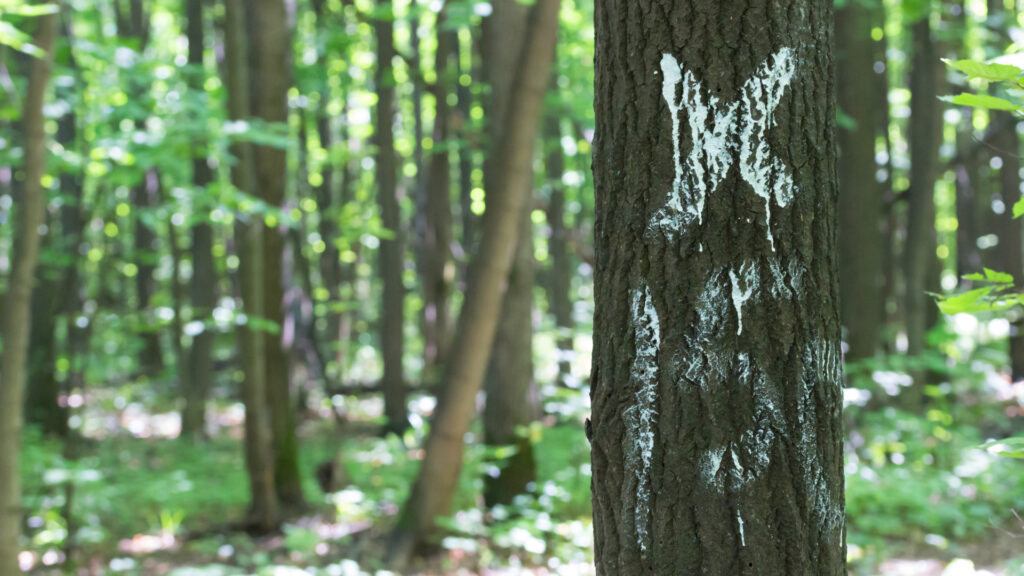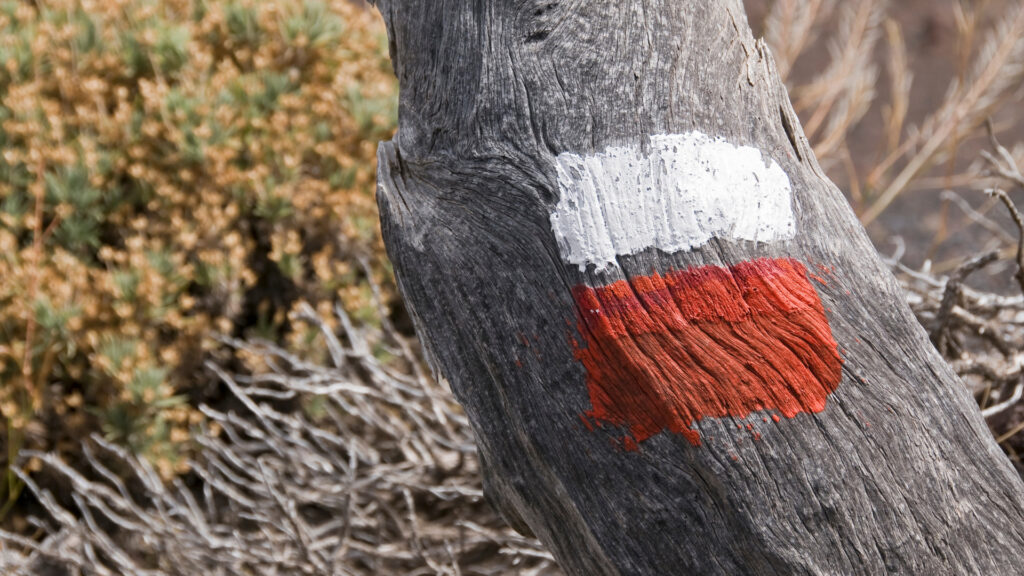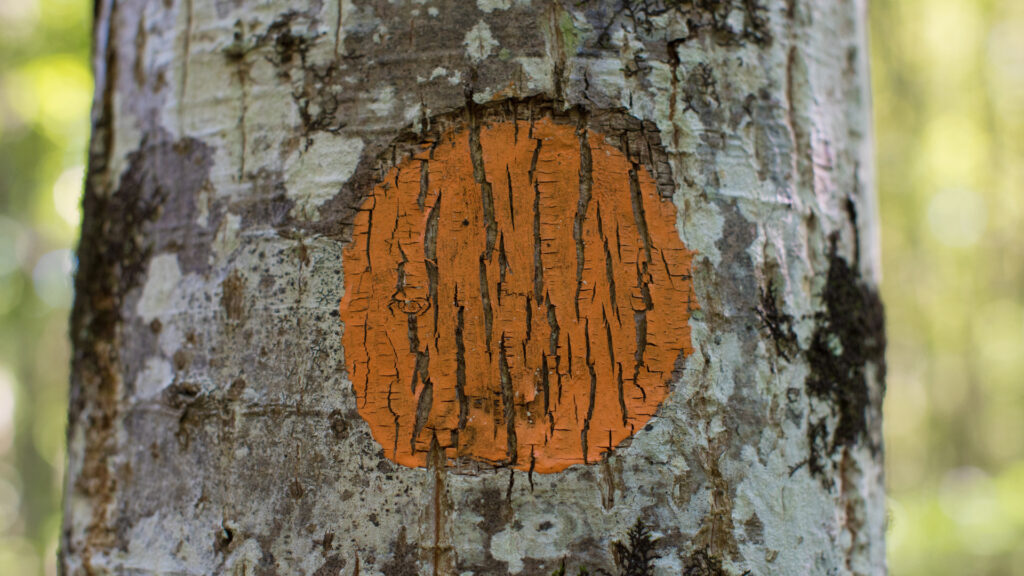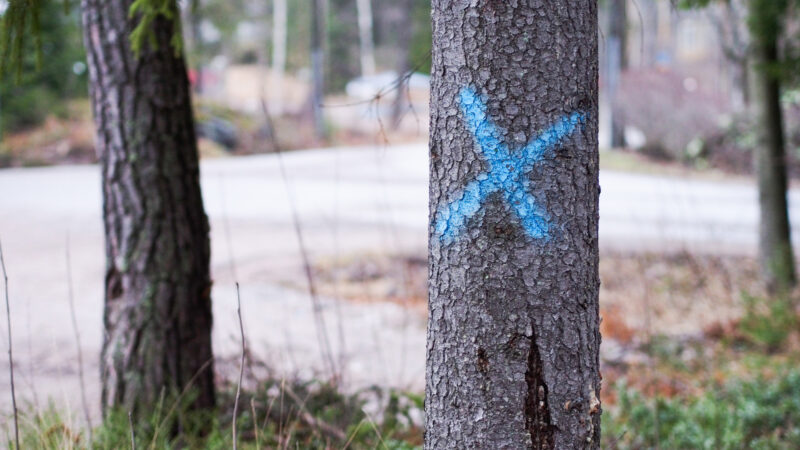Table of Contents Show
You can see leaves painted in various bright colors when hiking during fall.
However, no matter when you hike, there’s a chance you’ll also see Xs and other markings painted on trees. These markings aren’t there naturally and can tell you some vital information.
So what do these markings mean, and why do you need to know about them? Today, we’ll take a closer look at these markings, their meaning, and why you need to know about them.
Let’s get started!
Why Do Trees Get Marked?
Trees get marked for various reasons, typically for a specific purpose for professionals, organizations, or individuals to communicate important information to anyone wandering through the area. But why do they use paint and not just hang a sign?
Unfortunately, mother nature and weather elements can easily damage or remove signs. This renders them useless and doesn’t communicate the necessary information.
However, paint doesn’t disappear easily once it dries to a tree’s surface. In most circumstances, it’ll last for years.

What Do X’s Painted on Trees Mean?
X’s painted on trees can mean various things, so it’s important to consider who would have painted them there.
One of the most common uses is to serve as markers for property lines. This is most commonly a bright orange X painted on the trees in plain sight.
This helps ensure that you don’t accidentally wander onto private property. Most landowners won’t be pleased if they find individuals on their property without permission. So consider it your ‘No Trespassing’ warning if you see a line of X’s painted on trees.
However, because paint marking meanings vary considerably, it’s best to check with whoever manages the land. This may require a phone call to the local forestry or trail management organization.
Other Important Symbols Painted on Trees You Should Know
While paint markings could indicate a change in property ownership, that’s not the only possible meaning.
Let’s look at other important symbols painted on trees that you should know. And keep in mind not all of the markings will be an X. You may see several other shapes and markers.
Trail Markers
Paint is an effective and inexpensive way to mark trees for trails. This can help hikers to stay on the trail and avoid causing any further impacts on the land.
You’ll typically see these painted at head height in various colors. This is especially helpful in areas where trails frequently intersect with one another. Like a connect-the-dots puzzle, hikers follow the trail markings along the way.

Forestry Management
X’s and other markings can indicate the tree’s timber type or age in forests designated for commercial logging and harvesting purposes.
This can help companies follow their plan for the long-term health and productivity of the forested lands they manage. This helps create sustainable forestry programs and avoid overharvesting.
Wildlife Management
Sometimes an X or other markings on a tree signify that removing the tree will improve the wildlife habitat because of the age or type of tree. This is often to create diverse vegetation, which attracts various wildlife species.
Wildlife management often uses an X with an additional symbol to state a more specific reason for the tree’s removal.
An X with a triangle often indicates the need to create a clearing, and a circle indicates the need for a wildlife tree for cavity-nesting wildlife.

Research and Monitoring
A researcher or other scientist may have placed the markings on a tree.
In addition to the main marking, numbers or other identification symbols may be present. These typically link the tree to data or research projects.
Scientists mark trees to track them and gather information about tree growth rates, health, and any potential environmental stressors. This can help them learn about invasive species, forest management practices, and how climate changes affect trees.
Keep in Mind: You may think national parks are the place to be, but These National Forests Are Better Than Most National Parks!
Utility Companies
Utility companies often mark trees to help indicate they need trimming or removal. They commonly do this to protect power lines and utility infrastructures.
In addition to a large X, there may be other symbols to help crews know what they need to do to the tree. This can help avoid cutting down a tree that only requires trimming.
Keeping trees and branches away from utility poles and lines is important. Falling branches or trees can cause widespread power outages and dangerous conditions for workers.
Utility workers do their best to accommodate trees and avoid cutting them down, but they may have no other choice.
Tree Health Assessment
Officials will paint X’s or other symbols on trees to indicate trees that may have a health issue requiring removal or treatment. Unfortunately, trees can pass diseases to one another, which can wipe out an entire forest.
Tree markings can assist officials in ensuring the trees get the care they need to protect them from diseases and insects and prevent diseases from spreading further.
Keep in Mind: Is the Ugliest National Park actually worth visiting? Let’s find out!
Conservation Efforts
If you’re walking through a forest and see painted markings on a tree, it could be a conservation area. The area could be home to rare or endangered species that require protection.
The markings could communicate the need to protect the tree or the habitat of an endangered species. If this is the case, you better walk away slowly and ensure you don’t do anything to cause damage to it.
Be Aware of Tree Markings When in Nature
As you can see, tree markings can provide us with some important information. If you see these markings and don’t know why they’re there, it’s best to leave the area.
You don’t want to disrespect the natural environment or unknowingly cause harm. Doing so can help ensure you minimize your impact on the area and that future generations can enjoy the natural beauty.







This would have been a great article to mention the use of PURPLE on trees as a marker for private property boundaries, I see you did not do that. Let’s educate the public so they don’t wander onto private property and get hurt.